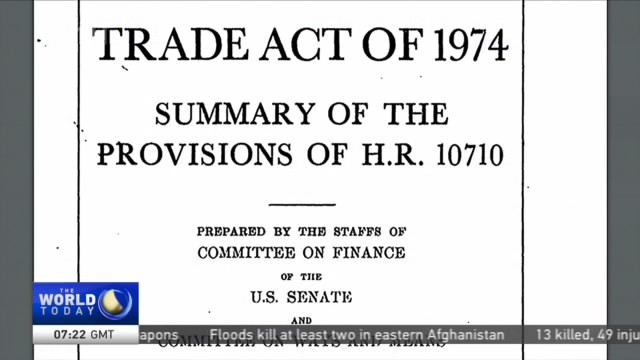
07:34, 16-Aug-2017
China-US Trade Policy: What is Section 301?

Let's now take a closer look at what exactly Section 301 is, and why Donald Trump is seeking to use it against China.
President Trump has vowed to crack down on China and now he's taking action. The president will sign a memorandum directing his top trade advisor Robert Lighthizer to look into China's intellectual property practices. Lighthizer will focus on Chinese practices that allegedly force U.S. firms operating in China to turn over proprietary technological secrets.
JAMES NOLT SENIOR FELLOW, WORLD POLICY INSTITUTE "I expect one reason President Trump picked him is that he expects he'll be very tough on the Chinese and he'll investigate and come up with recommendations that may include some protectionist measures. "
Lighthizer will launch a so-called Section 301 investigation, under the 1974 Trade Act. This allows the president to unilaterally impose tariffs or other trade restrictions to protect US industries from "unfair trade practices" of foreign countries.
Section 301 was a popular trade tool in the 1980s to combat Japanese imports of motorcycles, steel and other products, but has been rarely used since the creation of the World Trade Organization in 1995.
JAMES NOLT SENIOR FELLOW, WORLD POLICY INSTITUTE The WTO provides a more robust authority to enforce trade sanctions in the case of unfair trade practices such as dumping. The problem is Trump doesn't trust the WTO just as he doesn't trust a lot of multilateral organizations. He doesn't trust them to be an effective instrument for regress of grievances, so he's trying to resuscitate the section 301 to go back to the idea of national power as the main way to address suspected abuses or suspected abuses abroad.
The investigation could result in steep tariffs on Chinese goods or imposed sanctions, igniting fears that it could cause the international trade system to unravel or result in a full on US-China trade war.

SITEMAP
Copyright © 2018 CGTN. Beijing ICP prepared NO.16065310-3
Copyright © 2018 CGTN. Beijing ICP prepared NO.16065310-3